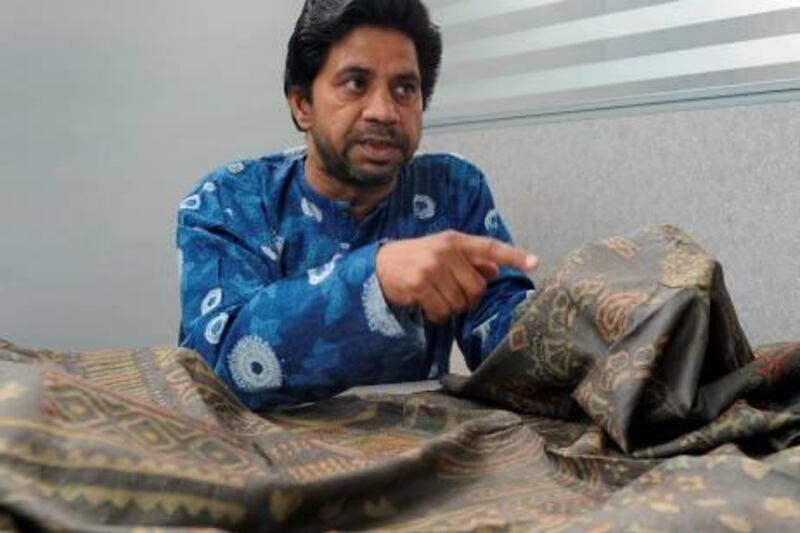NEW DELHI // India’s handicraft workers have begun to move beyond traditional markets and government-backed shops to sell their wares, hoping that the rise of e-commerce can boost sales.
A number of artisans have started selling via the website nethaat.com, which was launched this year with the aim of providing a new outlet for makers of items such as textiles, metal and wooden goods and jewellery.
Rakesh Sonava, who co-founded the portal – its name translates as “net marketplace ”– said he was inspired by his family’s experience and their struggle to sell goods.
“My uncle used to go from place to place selling hand-printed cushion covers and bed linen. He could sell what he carried with him but nothing more,” said Mr Sonova, 42.
“I wanted to set up a permanent platform for people like him to sell his goods.”
The handicraft industry is one of India’s biggest employers and a mainstay for the rural economy. The All India Artisans and Craftworkers Welfare Association estimates that 13 million people work in the sector.
Sales of Indian handicrafts amounted to 87.2 billion rupees (Dh7bn) in 2009-10, according to the government-backed Export Promotion Council for Handicrafts.
Since January, Mr Sonava and his partner, Roshan Agarwal, 31, plus a network of representatives, have been helping artisans to create and manage their own online stores, ad providing help in areas such as packaging and customer service.
Some, such as Fajuddin Saifi, a 35-year-old papermaker from the northern city of Agra, even bought their first computer after hearing about the venture.
Artisans can stock up to 25 items on the website for free, with 3.5 per cent of revenues going to Nethaat. If they want to stock more products, they pay the company 400 rupees a month.
Mr Sonava and Mr Agarwal have so far spent 900,000 rupees on the venture, with some 1,800 products for sale, ranging from textiles costing 70 rupees to marble tabletops costing 15,000 rupees.
They also offer a bargaining option on some products, where the buyer can negotiate with the seller before they agree on a price, much like the haggling that is common in India’s bustling street markets.
Brij Ballabh Udaiwal, 46, has been in the handmade textile business for 30 years and is the fifth generation in his family to enter this line of work.
“We are good at what we do,” said Mr Udaiwal, from Jaipur, displaying a richly embroidered silk wall hanging. “But without a platform like this to sell our products directly to consumers, we wind up ceding all profits to middlemen. This way, we can at least hope to get a fair price and get some credit for our skill.”
Mr Sonava refused to divulge any sales figures or the number of artisans involved, saying only that it was “early days” and the site should achieve an annual turnover of 1.8 million rupees by next May.
India’s use of computers and the internet is low despite the country being a major player in information technology and outsourcing. But the government plans to extend broadband internet access across the country, including to the rural heartland, and industry observers expect e-commerce to grow by nearly 50 per cent this year.
The Internet and Mobile Association of India says online retailing, which currently accounts for eight per cent of India’s e-commerce market, is developing rapidly.
“Online retailing is starting to take off and is set to become more and more popular in India,” said the association’s president, Subho Ray. “E-commerce sites are able to offer better prices, attractive deals and more efficiency to consumers.”
Mr Udaiwal and Mr Saifi admitted that their initial online sales were disappointing. They hope for better returns within a year or two.
“I am happy to be part of a business which supports artisans,” Mr Udaiwal said. “Although we haven’t made much money through it so far, my hope is that in two years, 50 per cent of our sales will take place online.”





